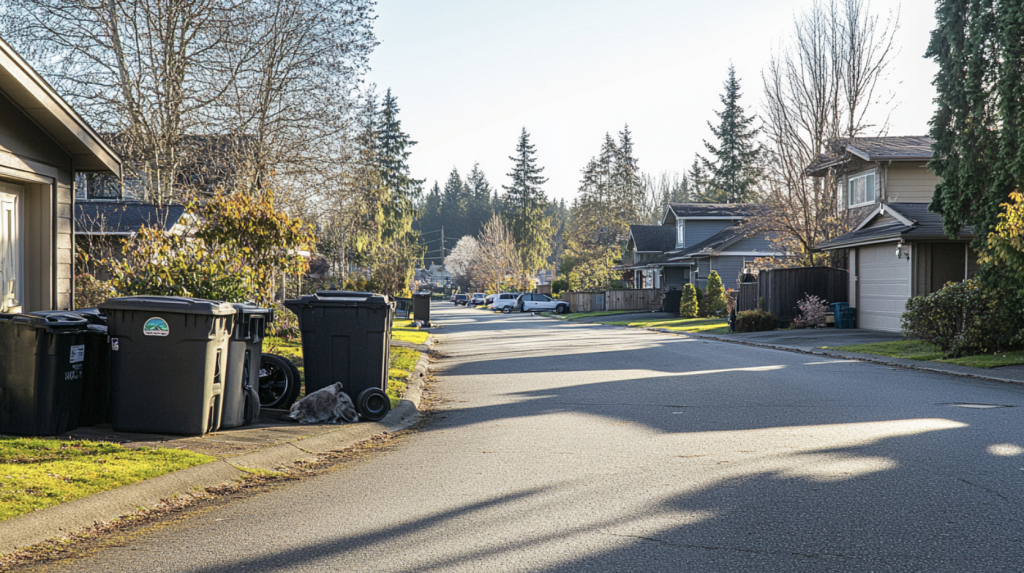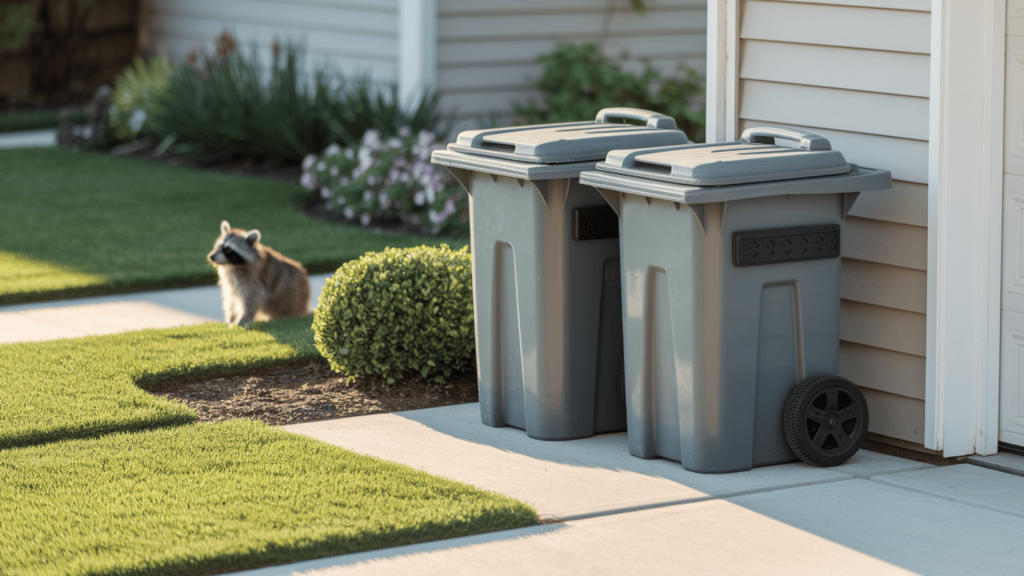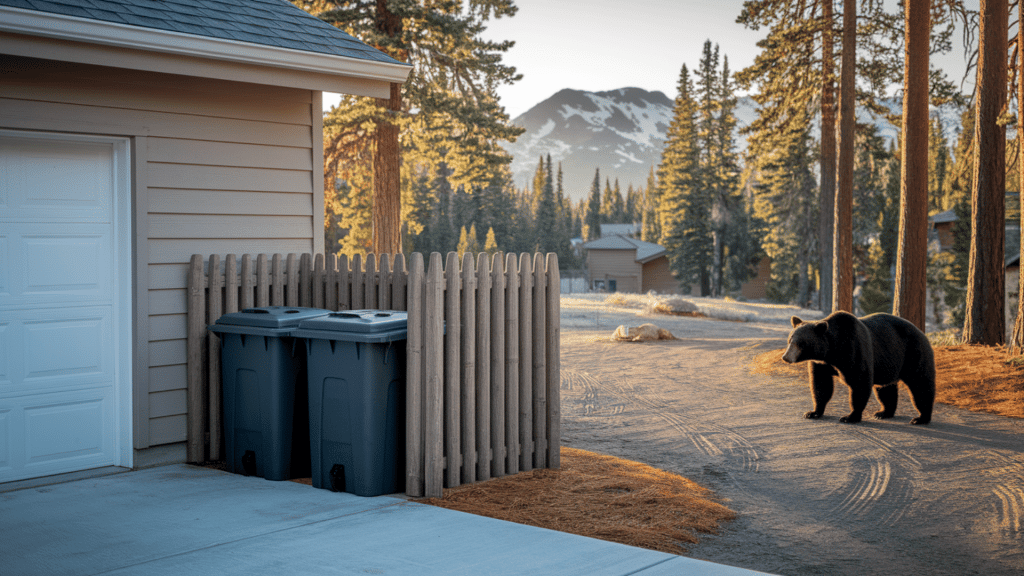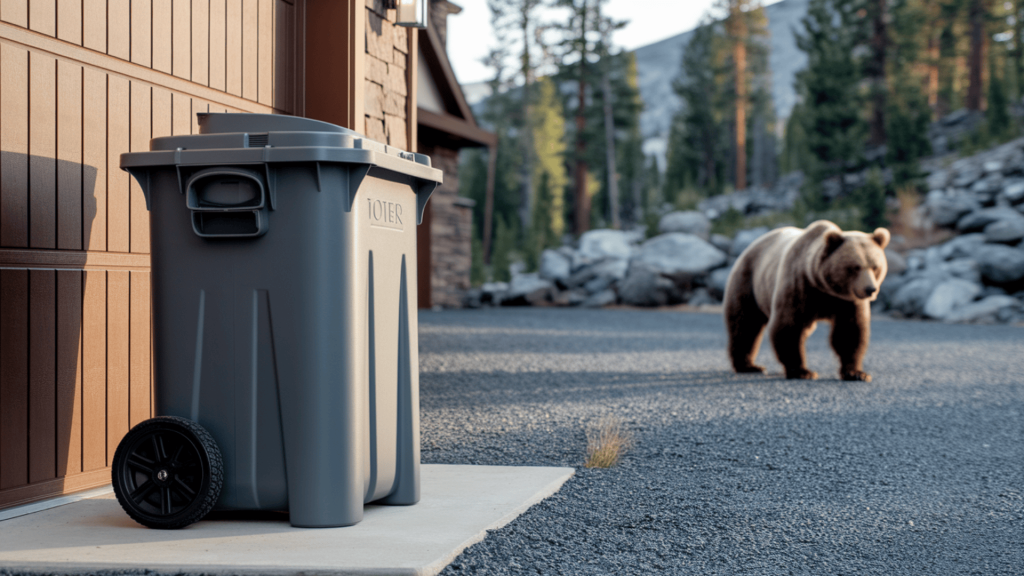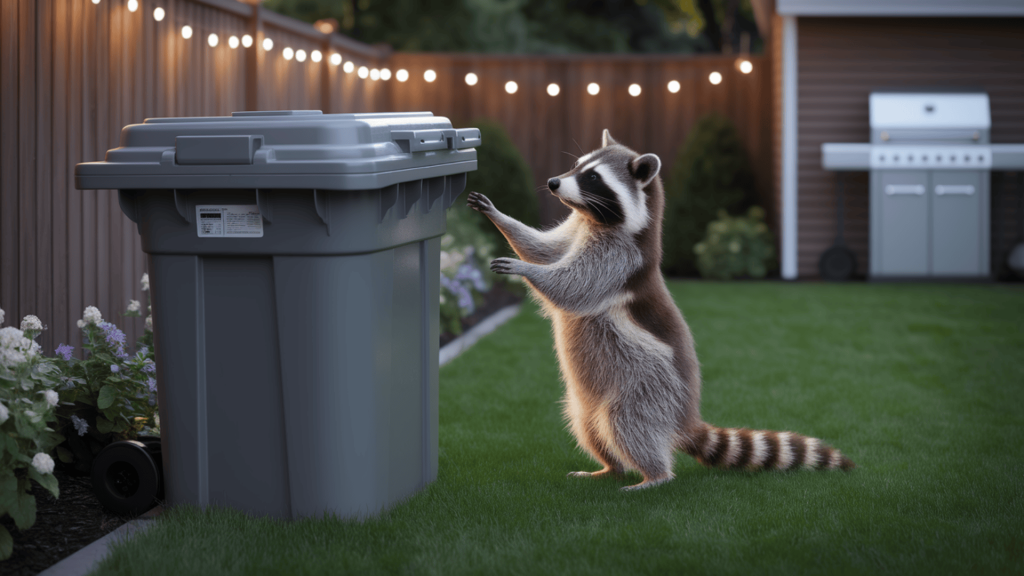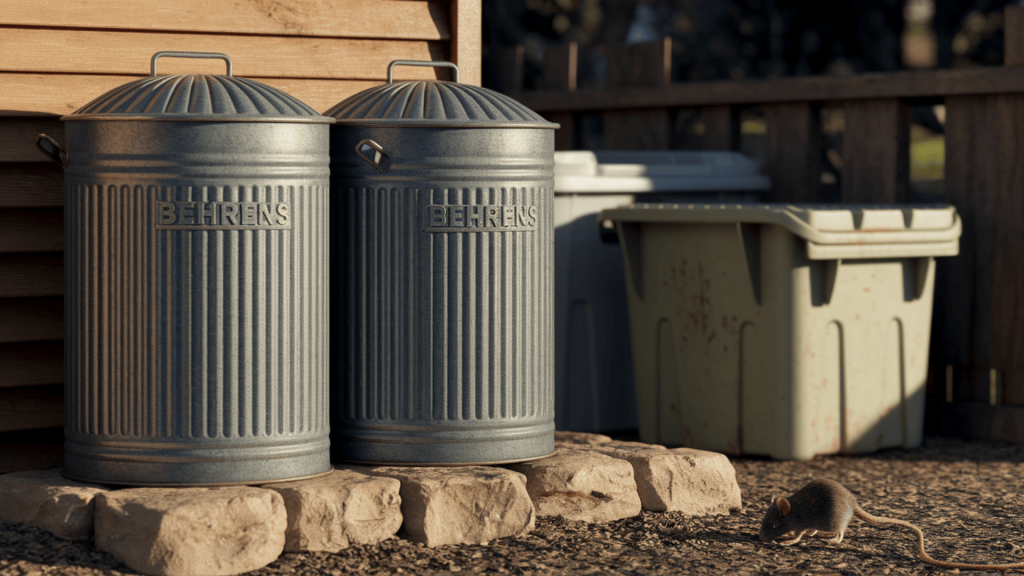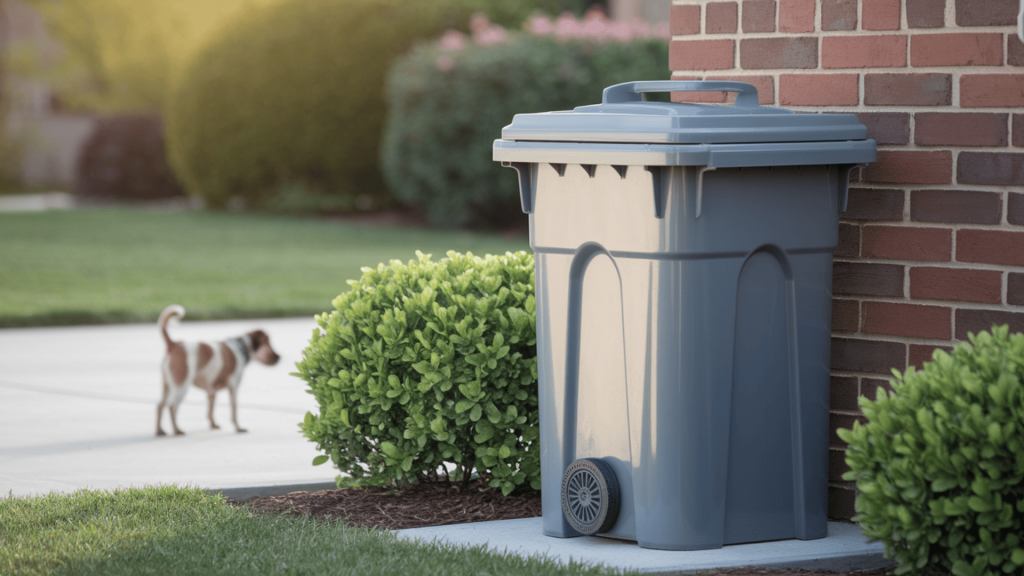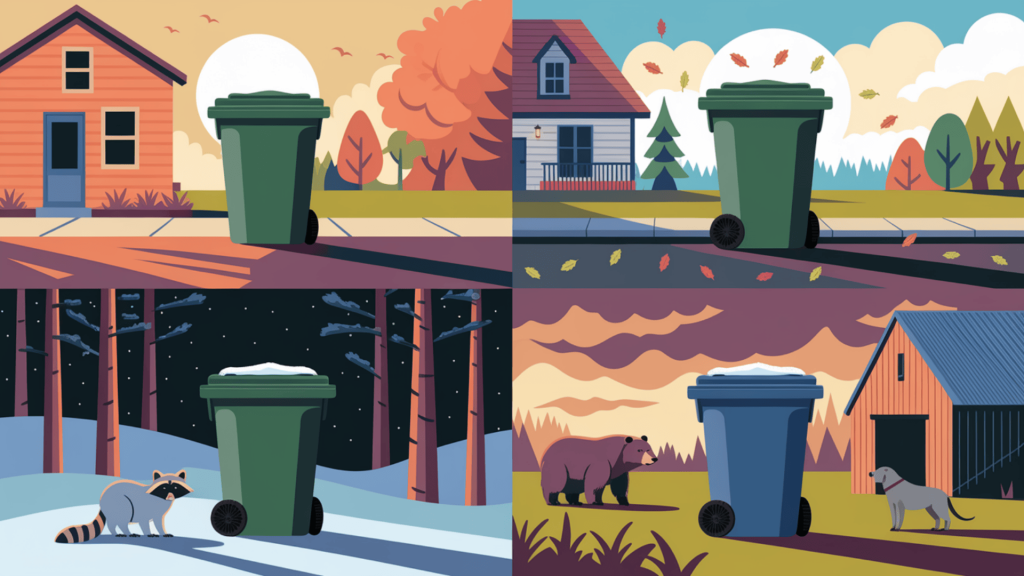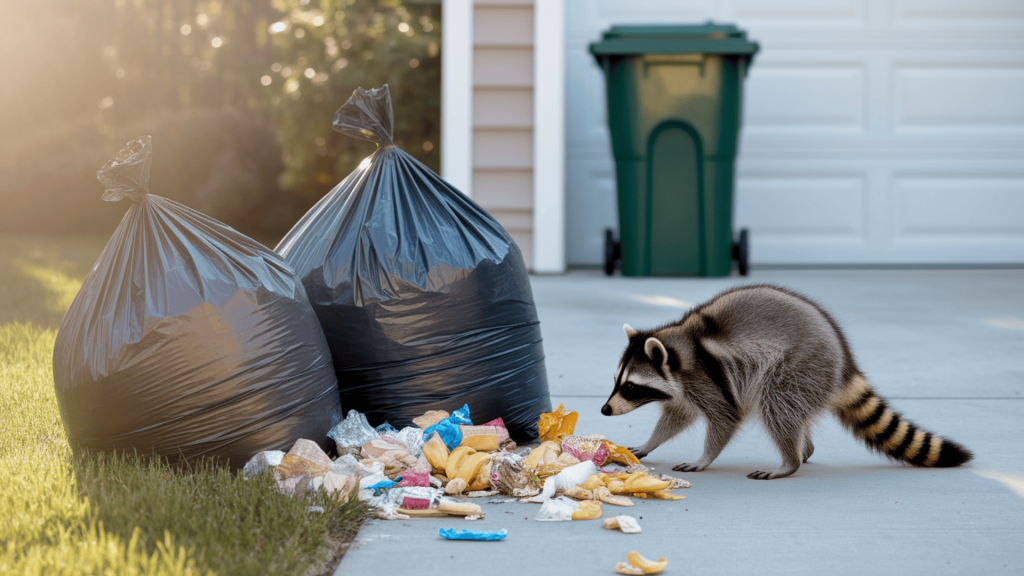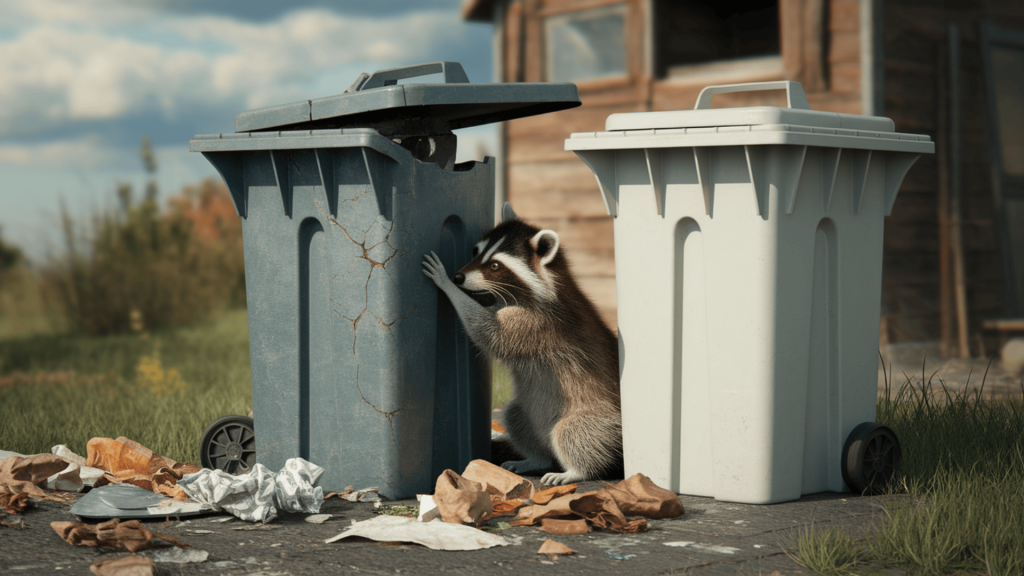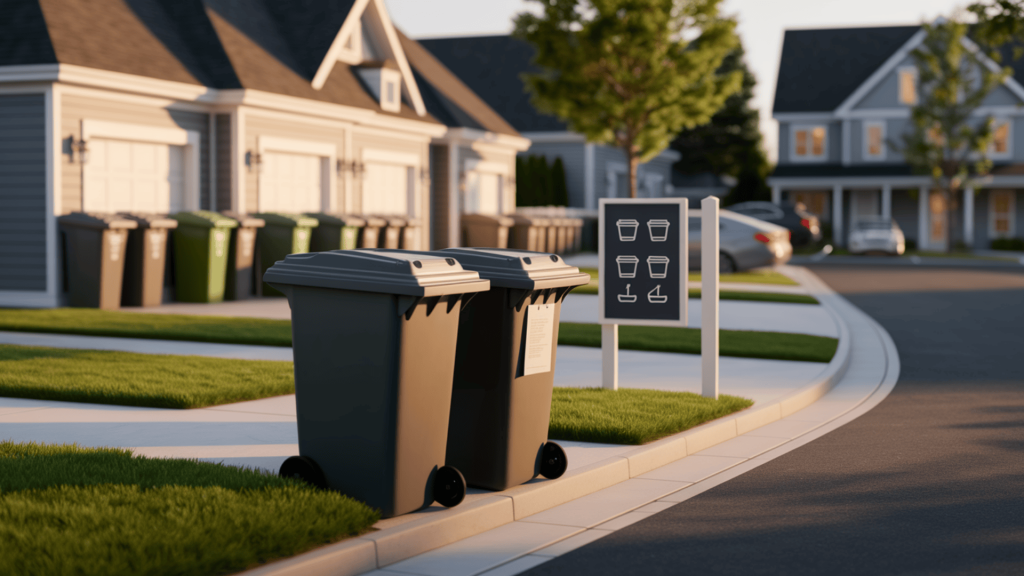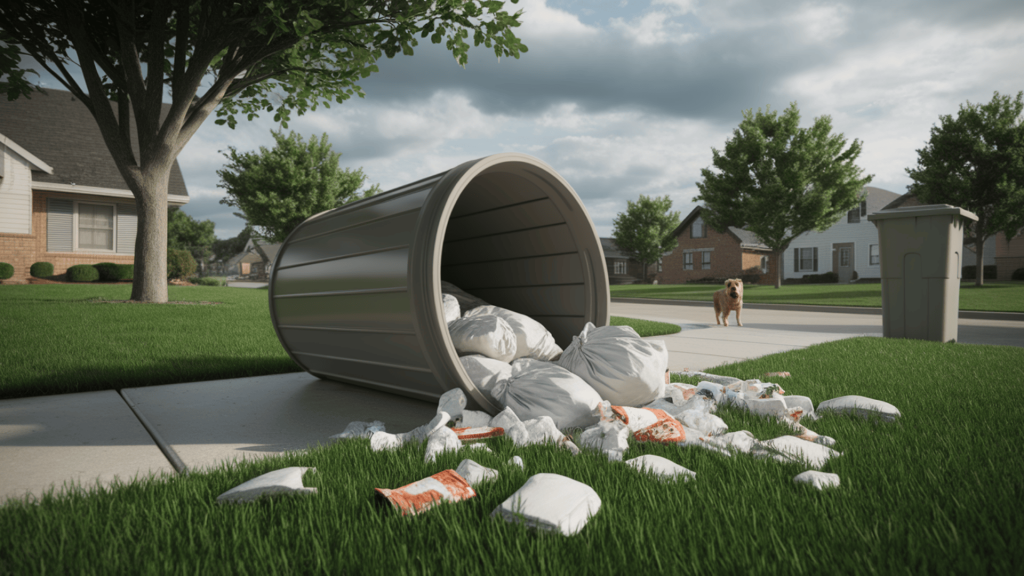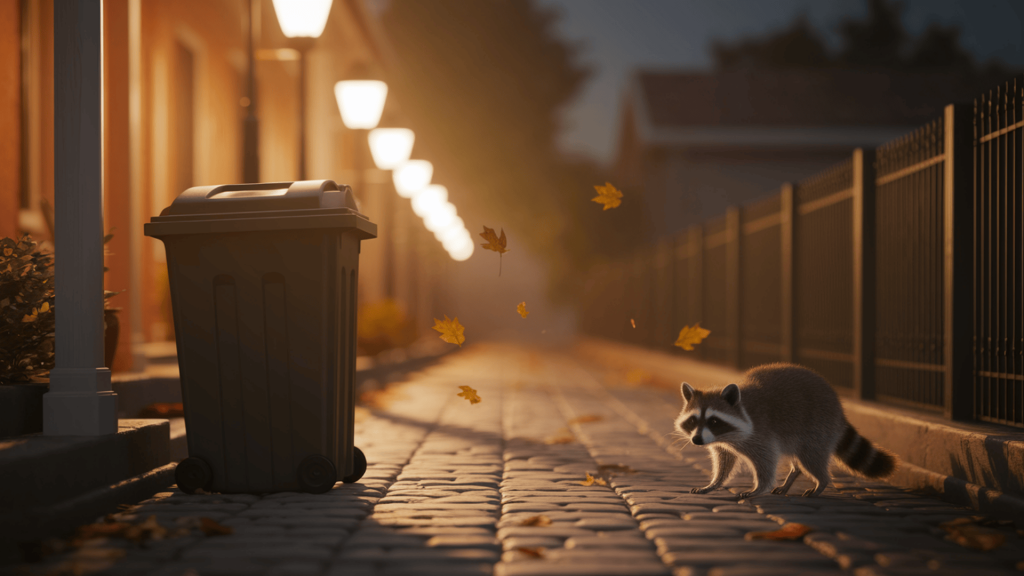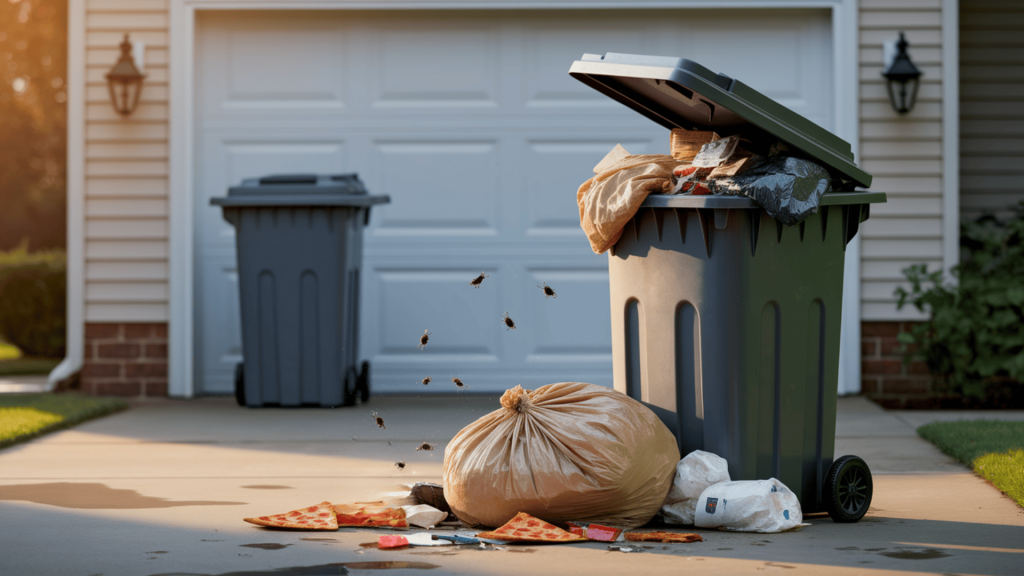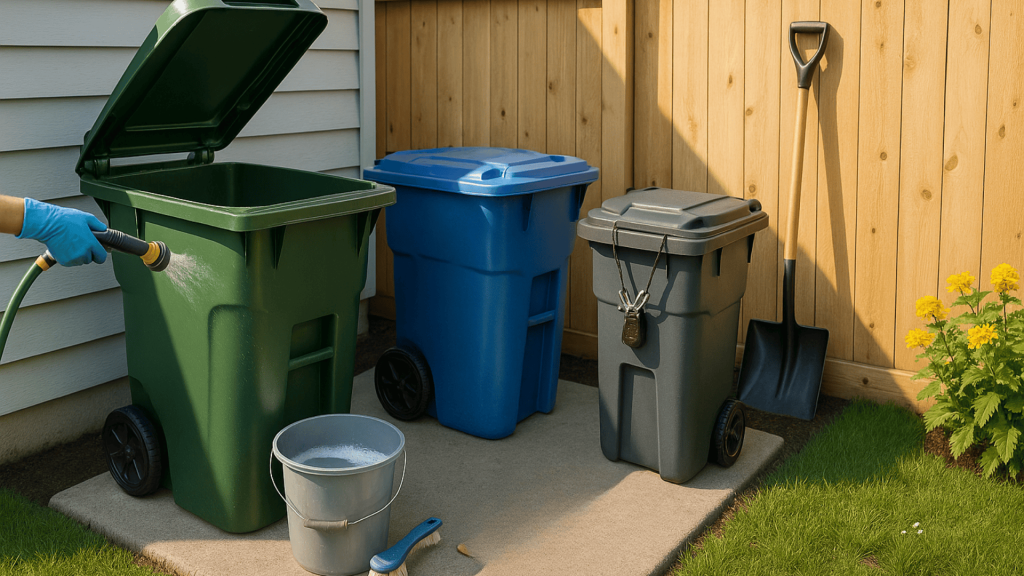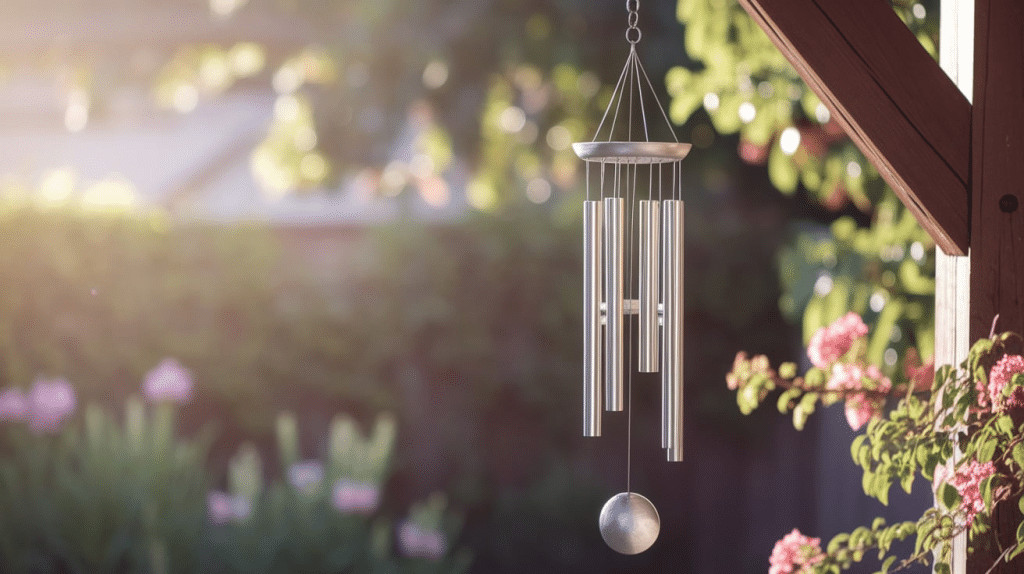Protecting your home starts right at the trash bin.
Outside garbage containers must be strong enough to withstand both weather and wildlife, yet practical for everyday use.
Most homeowners don’t think about their trash setup until problems strike, when bags get torn open, smells spread, or local animals turn their yard into a buffet.
A proper outdoor waste system acts as your property’s first line of defense against pests, odors, and unsightly messes.
Getting the right containers isn’t just about convenience – it’s about keeping your home safe and clean while following local rules that many people overlook until fines arrive.
What Should Outside Garbage Containers Be Like?
Picking the right outdoor trash bins can make or break your home waste management system.
Get it wrong, and you’ll face unwanted visitors and unpleasant smells.
Get it right, and you’ll hardly notice them doing their job.
The perfect outdoor bin starts with a no-leak bottom and a lid that stays put during windy days or animal visits.
Think of it as a fortress for your trash – strong walls made of thick plastic or treated metal, and a gate (the lid) that keeps everything safely inside.
Quality bins pay for themselves quickly.
They last through harsh weather, stop critters from turning your yard into a buffet, and keep your outdoor space looking tidy.
Plus, they help you stay on good terms with both neighbors and local rules.
The right container handles whatever you throw away.
It sits quietly at the edge of your property, doing its job without making a fuss.
And isn’t that exactly what we want from our waste bins?
Why Proper Outdoor Trash Containers Matter More Than You Think
Your outdoor trash setup might seem like a small detail in home management, but it impacts daily life more than most people realize.
The right containers keep your property clean and safe, while the wrong choices can lead to ongoing problems.
Think about what happens when trash isn’t properly stored.
Animals from tiny mice to neighborhood dogs can tear open bags, spreading waste across your yard.
This creates not just a mess but health risks too.
Good containers block access to these unwanted guests.
How your property looks matters too.
Neat, well-contained trash shows care for your home and respect for neighbors.
It’s a small thing that makes a big difference in how people see your property.
Health Concerns
When waste isn’t properly contained, it can attract bugs that carry sickness.
Flies land on trash, then on your food.
Rodents bring various health problems.
Good containers create a barrier between these pests and your family.
Property Value Protection
Homes with tidy yards and well-managed waste systems tend to keep their value better.
It’s part of the overall curb appeal that matters when people look at houses in your area.
Proper waste management signals to neighbors and potential buyers that the property is well-maintained throughout.
Bear-Proof and Wildlife-Resistant Regulations You Need to Know
Living in places where wildlife roams means following special rules for trash storage.
These aren’t just suggestions—many towns have strict laws with real penalties for those who don’t comply.
Eagle County’s rules show how serious this issue can be.
Ordinance 07-001 requires special containers in certain areas where bears and other animals are common.
This isn’t about being picky—it’s about safety for both humans and wildlife.
Between trash days, your bins shouldn’t sit outside where animals can try to break in.
A garage, shed, or other secure spot keeps them safe. Some people build small enclosures just for their trash cans.
Penalty System
Breaking these rules isn’t just bad form—it can also cost you money.
Many towns issue warnings first, then move to cash penalties that increase for repeat problems.
Some places even add special taxes or fees to areas with high rates of wildlife issues.
Why These Rules Work?
Towns with strong trash rules report fewer human-wildlife conflicts.
When animals can’t find food in trash cans, they’re less likely to hang around homes looking for meals.
Best Types of Outdoor Garbage Containers
Finding the right outdoor trash container means balancing several factors.
Here’s how some top options compare in terms of how well they work against different animals and their cost.
1. Top Pick for Bear Country
For those in heavy wildlife areas, the Toter Bear-Tight Wheeled Trash Can stands out.
This bin has been tested against actual bears and holds up to their strength and smarts.
The locking system requires human hands to open, but rolls easily for transport.
The downside?
These bins cost more than standard options.
2. For Raccoon Problems
The Rubbermaid Animal Stopper works well for medium-sized pests like raccoons and stray dogs.
Its two-latch system stops paws from prying open the lid, while being easy for humans to use.
The price sits in the middle range, making it good for suburban homes.
3. Rodent Protection
When mice and rats are your main concern, the Behrens Metal Can offers great protection.
Its all-metal construction can’t be chewed through, unlike plastic bins.
These old-school cans last for years but lack wheels for easy movement.
4. Budget Option With Security
The United Solutions 32-gallon bin costs less than specialty wildlife containers but still offers good protection.
Its snap-lock lid stops basic tampering and holds in smells that attract animals, making it good for areas with minor wildlife issues.
For those who already have bins, the Doggy Dare Can Lock lets you upgrade without buying new containers.
This strap-on lock works with most standard bins to stop animals from pushing lids open.
Choosing the Right Bin for Your Needs
Picking the perfect outdoor trash container requires considering your specific situation.
When it comes to waste management, one size doesn’t fit all.
First, consider how much trash your household produces.
A family of four might need a 64-gallon bin, while someone living alone could use a 32-gallon container.
Your local wildlife matters, too.
If bears visit your neighborhood, you need the strongest protection possible.
For places with just raccoons or stray cats, medium security works.
Being able to move your bin matters on pickup day.
Wheels help with heavy loads, but they can sometimes make bins less secure.
Find the balance that works for your strengths and property layout.
Certification Importance
Some areas require bins to meet specific standards.
Look for containers that groups like the American National Standards Institute have tested.
These certified bins have proven they can withstand the wildlife they claim to stop.
Weather Factors
The hot sun can warp plastic bins over time, strong winds can knock over lightweight containers, and snow can block access to your bin in winter.
Think about your local weather when choosing materials and features for your trash container.
Common Mistakes to Avoid with Outdoor Trash Storage
Even with good intentions, many households make errors with their trash storage that lead to problems.
Knowing these common pitfalls can help you avoid them.
1. Using No Hard Containers
One major mistake is leaving bags outside without a hard container.
Plastic bags offer no real protection against animals or the weather.
Even just overnight, unprotected bags can be torn open and spread across your yard.
This exposes food waste to wildlife and creates cleanup headaches.
A proper bin is your first line of defense against outdoor messes.
2. Ignoring Broken Components
Using containers with broken parts creates false security.
A bin with a cracked lid or missing latch might look okay, but it won’t stop determined animals.
Check your bins regularly for damage and replace parts that don’t work right.
Small cracks often grow larger with use and temperature changes.
What starts as a minor issue can quickly become a complete failure point.
3. Overlooking Local Rules
Many neighborhoods have rules about trash containers that homeowners ignore.
This can lead to warnings, fines, or even problems with HOA boards.
Know your local laws before setting up your trash system.
Some communities have specific requirements about bin color, size, or placement.
Learning these rules early on can save trouble later.
4. Failing to Secure Lightweight Bins
Light bins can be knocked over by wind or animals.
Without some way to anchor them, your neatly bagged trash might be spread across the yard after a stormy night.
Tipping creates both mess and noise that can bother neighbors.
Stability matters for both cleanliness and community harmony.
5. Poor Timing Practices
Putting bins out too early or leaving them out too long gives scavengers more chances to investigate.
Follow pickup schedules closely to limit exposure time.
Each extra hour outside increases the risk.
The best practice treats outdoor time as something to minimize, not extend.
6. Overfilling Containers
Stuffing too much into your bin means the lid won’t close properly.
This gap invites pests and lets smells escape.
When you have extra trash, find proper ways to store it rather than forcing it into an already full bin.
Proper closing prevents rain from soaking trash and making it heavier.
It also stops wind from carrying lighter items away.
Maintenance and Placement Tips for Long-Term Hygiene
Keeping your outdoor bins working well takes some care.
A few simple habits can make your trash system more pleasant to use and more effective.
For areas with clever animals, adding extra security helps.
Bungee cords or aftermarket locks can upgrade basic bins without replacing them completely.
These small additions often solve persistent animal problems.
Key maintenance practices include:
- Weekly Quick Checks: Look for cracks, loose parts, or signs of animal tampering. Please inspect your containers while they’re empty during trash day.
- Seasonal Deep Cleaning: Empty and wash bins with soap at least quarterly. Hot water and dish soap work well, followed by drying in the sun to reduce bacteria.
- Proper Placement Planning: Find level ground away from high-traffic areas. The ideal spot balances convenience with keeping bins out of sight.
- Lid Discipline: Always secure lids completely after each use. This simple habit prevents the most common trash problems before they start.
- Weather Preparations: Adjust your system for seasonal challenges. Different seasons bring different problems that need specific solutions.
- Regular Replacement Schedule: Plan for new bins every 5-10 years. Even well-made containers wear out from exposure and regular use.
Practicing these simple practices can help extend the life of your bins while keeping your property clean and pest-free.
Most take just seconds but prevent hours of potential cleanup later.
Wrapping It Up
Your outdoor trash system speaks volumes about your home.
To protect your property and neighborhood, outside garbage containers must be thoughtfully selected and maintained.
The right bins save you time, prevent frustrating cleanups, and help keep peace with wildlife and neighbors alike.
Investing in quality now means fewer headaches and expenses down the road.
Ready to upgrade your waste management?
Check local regulations, then select containers that match your specific needs.
Remember—what works in bear country might not be necessary in the city.
Do you have questions about the best options for your situation?
Drop them in the comments or share your own trash container success stories that might help others avoid common pitfalls!

